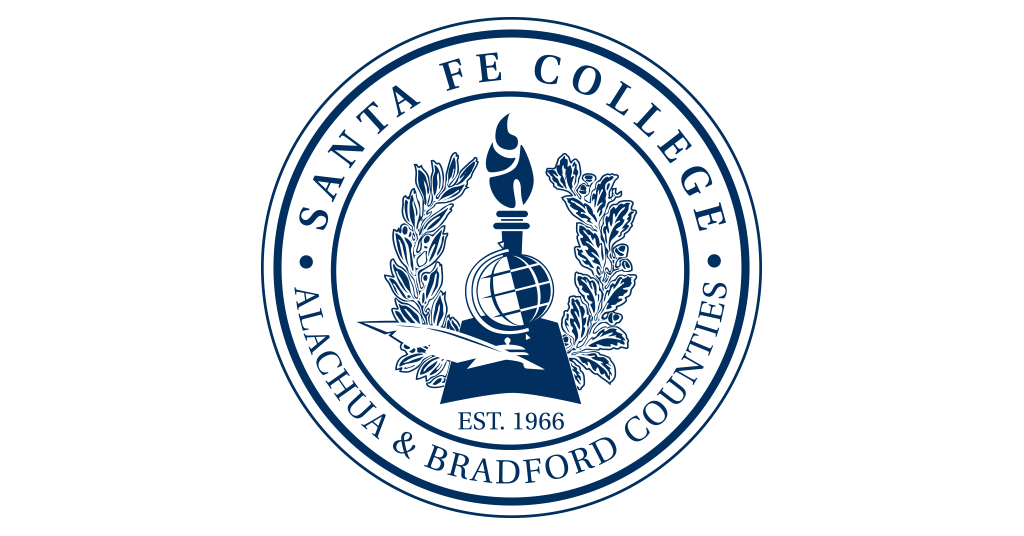Jack Brown Retiring from Santa Fe Teaching Zoo
June 27, 2010
Jack Brown, the man synonymous with the Teaching Zoo for decades, is retiring from Santa Fe College June 30. The college is celebrating his tenure with a going away party starting at 6:30 p.m. Friday, June 25 at the Teaching Zoo. The party is open to the public.
“Jack has an unflagging love for animals and their place in our world,” said SF President Jackson Sasser. “Only equal to that love is his enthusiasm for sharing his affection for animals with students. He has contributed a rich dimension to our college for which I am grateful.”
Brown arrived as an instructor in the zoo's fledgling years back in 1974 when it was known as the Biological Parks Program. By 1985, he took over as director, serving the zoo for a total of 36 years.
Brown's passion for inspiring young people to “win hearts and minds for wildlife,” his leadership and articulate advocacy, helped make the Teaching Zoo the premier wild animal technology program in the United States. It is the only teaching zoo accredited by the Association of Zoos and Aquariums, and its graduates work in 160 zoos in 42 states.
Early years
There was no telltale sign that Brown would one day end up as a zoo director. He didn't own an animal menagerie as a child or even grow up on a farm. Instead, he had the run of a small Midwestern town, Genesco, Ill. (pop. 5,000), where he “couldn't get away with anything” as the son of the town's barber and beautician. He was fascinated by dinosaurs and dreamed of being a paleontologist as a child. The closest he got to a zoo were family visits to the Brookfield Zoo in Brookfield, Ill.
Brown majored in Earth Science at Western Illinois University as an undergrad and eventually earned a Master's in Zoology, also from Western Illinois. He taught junior high school science in Oak Park, Ill., for three years.
“Some people would say that was a good precursor to being a zookeeper,” he jokes. “But I loved teaching junior high school kids. They were so much fun.”
Arriving at the Teaching Zoo
He applied for a teaching job in the Biological Parks Program at Santa Fe. The phone was ringing as he walked in the door on the last day of school in 1974: “Can you come down to Florida for an interview?” He and his wife, Barbara, left the next day. At that time, the young couple had been married for five years and hadn't started their family.
That year, the parks program had just 25 students, a couple of dozen species, and 45 animals — mostly unwanted exotic pets such as boas, pythons, ocelots, and monkeys. Because they'd been pets, the animals were not well socialized and “didn't know who they were or how to act.”
“It was hands-on, learn-as-you-go back then,” Brown explained. “It was before the Internet so we called people and went to visit them in person when we needed to know something. We had a parrot who began to hatch out and it wasn't happening as fast we thought it should. So we called someone, and he said, ‘Oh no, that species is just slow.'”
By 1977, the program began to grow as their grads spread the word. When he took over as director in 1985, he expanded the zoo staff and the types of animals housed there.
Brown said the zoo has always functioned in a team environment, with the idea being that his staffers would discover their passion and then run with it. He said he did not believe in micromanaging, but rather in respecting his staff, trusting them, and letting them develop their interests, which in turn helped grow the program.
“We became more of a part of the zoo field,” he explained. “Our relationship with Disney's Animal Kingdom has blossomed so nicely.”
Initially the zoo was not open to the public, and then they began catering to kids and school groups. Now they run public conservation campaigns and offer tours seven days a week, and host more than 30,000 visitors a year. The focus is on getting people to connect and care for animals.
“One of Jack's first tasks was the layout and design of the trail system at the Teaching Zoo,” said Sture Edvardsson, Chair, Department of Natural Sciences. “He later grew into the leadership role for the program and it was primarily his vision that created the team concept that the zoo is now deservedly proud of, where all the staff work as one unit and model for the students the kind of team approach that they will work in when they get a job in the zoo field.
“He is probably the best PR person that we've ever had in any program. He's the face of the zoo, the person who goes out to talk to the public, the person who gets everyone to say, ‘Wow, there's a zoo.'
“He is the most positive, upbeat person I've ever met. He also was responsible for getting the zoo connected with professional animal parks and built a relationship with Sea World and Animal Kingdom, to the point where their representatives interview and hire our zoo grads right here on campus. Animal Kingdom also provides scholarships for our students.”
In 2005, Brown was honored as the FACC Community College Professor of the Year.
Retirement plans
Jack and Barbara recently celebrated their 41st anniversary. They met on campus at Western Illinois the first Friday of their freshman year, and were sweethearts from that day forward.
“She is a well organized business person and I am the outgoing people person — we're the perfect team,” he said.
Barbara works as a counselor at Gainesville High School and isn't planning to retire any time soon.
They have a daughter, Meredith, 34, who is married to Kyle and is an occupational therapist in Atlanta. They are the parents of Luke and Grace, 5-year-old twins, and Olivia, 3. The Browns' son David, 30, spent six years in the U.S. Coast Guard and now serves as an Alachua County sheriff's deputy. His wife is Meredith Anne and they have one daughter, Rory, 1.
Brown plans to spend plenty of time with his grandkids and to volunteer at the Florida Museum of Natural History in their fossil preparation department. Paleontology remains a lifelong hobby.
“I have a better paleontology library than most libraries have,” he said, adding that he is a huge reader and also enjoys history and science fiction.
He also plans to volunteer with Trinity United Methodist's Appalachian Service Project, as he has for the past 20 years. He and Barbara are also going on an Alaskan cruise this summer.
He imagines returning to the grasslands of the Serengeti in Africa: “My dream is to take my kids and the grandkids, maybe in 10 years of so.”
Leaving the zoo is hard, but he is determined to get through the parting “with a happy heart.” He looks back on having initiated 50 classes of students.
“As an instructor, they had to listen to my stories,” he said. “But my favorite thing is when they come back and tell me their stories, and to know I had a part in letting them follow their dreams. I am ‘that crazy old professor who was fun in class' and the person who ‘got them excited about animals.'”
Fundraiser for Gibbon Forest
Brown's retirement coincides with the kickoff for a fundraising campaign to build a new gibbon enclosure at the zoo. In lieu of cards, gifts or flowers, please send a tax-deductible donation to the Santa Fe College Foundation for the Gibbon Forest Exhibit. You can donate online at www.sfcollegefoundation.org or send a check to the Santa Fe College Foundation, RAC-207, 3000 NW 83rd St., Gainesville, FL 32606.

